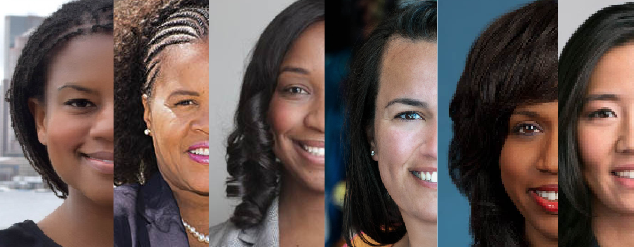Your donation will support the student journalists of Suffolk University. Your contribution will allow us to cover our annual website hosting costs.
Diversity dominates: Historic record of women elected in Boston
November 15, 2017
Candidates who were Suffolk students and women, especially women of color, saw successes in municipal elections last week in Boston. Still, low voter turnout persisted.
This year, Suffolk University graduate Jean Bradley Derenoncourt became the first Haitian-American city councilor in Brockton.
“It is important for young folks to vote and also to get engaged in the political spectrum,” said Derenoncourt. “We have the ability to shape the society we want to live in.”
Suffolk Masters of Public Administration candidate Peter Cutrumbes was a weekly volunteer for Boston City District 1 Councilor-elect Lydia Edwards.
“I always vote in local elections,” said Cutrumbes. “While dealing with smaller policy issues, they have the biggest effect on our day to day lives.”
Suffolk University senior government and economics major and SGA Senator Jonathan McTague won in Saugus’ municipal elections in 2015.
“Two years ago at the age of 19 [years old], I ran for Town Meeting and won while topping the ticket,” said McTague, whose town of Saugus had a turnout rate of just 22 percent this year.
The Boston municipal elections generated a 27 percent voter turnout rate according to WBUR. This low turnout is remains an increase from the 13.63 percent voter turnout in the 2015 municipal elections, according to the Boston Elections Department.
“We need to collectively find ways to better diagnose this issue,” said Dion Irish, Commissioner of the Boston Elections Department and Suffolk Masters of Public Administration candidate.
As Commissioner, Irish is responsible for administering the work of the election department by registering voters, recruiting poll-workers and training employees for election day. The commission also conducts a yearly census on people 17 years and older. The census helps to keep voter lists up-to-date.
Between fewer campaign resources, “voter burnout,” and a misunderstanding of local significance, Irish found reasons for why voter turnout is low in municipal elections.
“People may not fully appreciate that local elections have more of a direct impact on them,” said Irish.
This year, in some of Boston’s most competitive city councilor races, candidates won by just hundreds of votes, with some margins as slim as 3.5 percent.
“I think [local politics] have the potential to shape lives,” said Cutrumbes. “The more narrow margin of votes needed to win makes volunteering feel more important.”
Irish agreed that contested races increase voter turnout. Mayor Walsh had supported a bill before the Massachusetts legislature that would allow voters to sign nomination papers for multiple candidates, as they can for state and congressional candidates. The bill would increase accessibility for candidates to run for local office.
However, not all young people are as involved as Derenoncourt, Cutrumbes and McTague. Pew Research Center data in May showed that millennials have the lowest voter turnout rates compared to other generations.
“We’ve noticed that young people don’t participate at the same rate as folks who are 50 and above,” said Irish.
Boston has launched programs to increase civic engagement and voter turnout among young people.
SPARK Boston Council is one of these programs. Specifically 38 of the city’s residents aged 20 to 34-years-old serve year-long positions on the Council to advise Mayor Walsh on a myriad of policy issues in monthly meetings.
This year, the Boston Elections Department had 40 Boston public high school students work as poll-workers on election day. The students worked from dawn to dusk, receiving school credit for the hours they would have been in class, and a stipend for the rest of their time.
“I think it’s a great way for them to provide community service,” said Irish, “and also get engaged so that it is not confusing when they have the opportunity to vote.”
Irish added that there has not necessarily been a sense of misunderstanding among eligible young voters, but a lack of interest.
“I think because in local elections there is not as much publicity as a national election, some may just not know about them happening,” said McTague.
Presidential races usually result in higher turnout rates. In 2016, the voter turnout rate in Boston was 66.75 percent, according to the Boston Elections Department, which is higher than the national rate.
“Presidential elections typically have a year of advertising and marketing,” said Irish. “So the day is much more widely known, and the resources are more likely to draw people out to vote.”
With voter turnout higher this year than previous municipal elections, the racial and gender makeup of the Boston city council changed to reflect the city itself; just one piece of a national trend.
“I’m not sure what the cause is,” said Irish, “but I think it’s unifying moment for the county, that people can support candidates can look like them or do not look like.”
